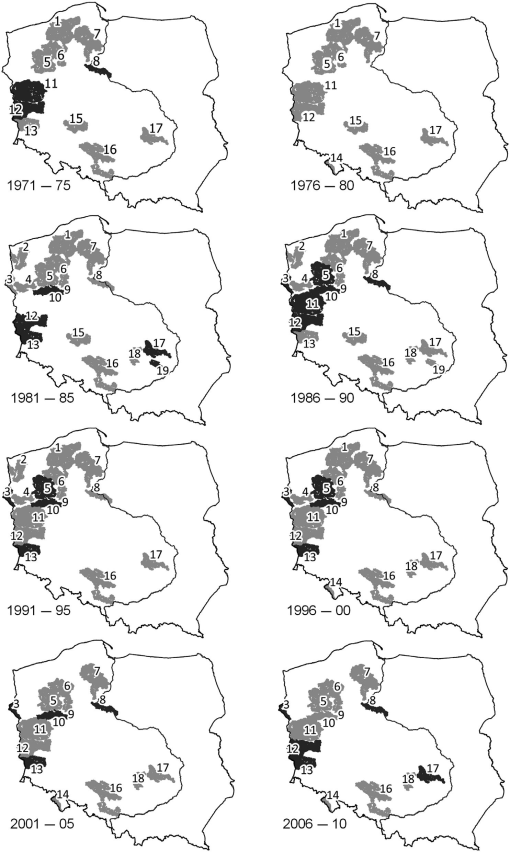Do wolves present in the Polish lowlands belong to two different populations?
In 2008, the European Commission proposed the division of wolves occurring in the Central European Lowlands into two populations – the Baltic and Central European ones, and the border between them was marked along the Vistula River. Among the arguments for the separation of the Central European population, the most important were: the history of this population (revival in the 2000s after total extermination in the 1970s), lack of connection with the Baltic population, and genetic distinctiveness. As a consequence, the new population was given a higher endangered status, in contrast to the Baltic population, which was considered to be the least concerned population. This division was never implemented in the wolf conservation practice in Poland, and its sense raised doubts from the very beginning.
In the latest issue of Wildlife Biology , we have published an article in which we re-evaluate the distribution of the wolf population along the Vistula River. First, we are presenting information from 14 publications and unpublished data on the occurrence and reproduction of wolves in western Poland in the years 1970-2010. They demonstrate that the wolves west of the Vistula have never been exterminated and have reproduced in this area. The slow increase in the abundance and range of the species in this area began, as in the rest of the country, after the wolf status changed from pest to hunted species in 1975 and accelerated after wolves became protected in 1995. Interestingly, the structure of the wolf habitat is more favorable in the west than in the east of the Polish lowlands. Forests cover about 32% of the area (27% in the lowlands east of the Vistula), and the forest complexes are much larger. The habitats of wolves on both sides of the Vistula are connected in several places, and the Vistula valley itself is also a convenient wolf dispersion corridor. Therefore, the Vistula River is not a barrier that would divide the wolf population. The results of all genetic studies conducted before 2020 also indicate that wolves living on both sides of the Vistula constitute one population. The latest genetic research published in 2020 appears to contradict this, but it is due to a misinterpretation of the results.
In 2017, when we made this analysis, wolves inhabited approximately one-fifth of Poland’s territory (61,940 km2). The wolf acreage in the lowlands, west of the Vistula, accounted for almost half of the wolf habitat (approximately 30,220 km2), and in the lowlands east of the Vistula only 23,550 km2. The area in the Carpathians is another 7,670 km2, and wolves also inhabited the Sudetes (510 km2). Wolves in the west have not yet inhabited 8,800 km2 of forests in the west, which seem to be a favorable habitat for this species (sufficiently large complexes and a sufficient number of ungulates). In the lowlands east of the Vistula, there are about 8 times fewer such environments (1,100 km2). This indicates a more advanced recolonization in eastern Poland. This is probably due to the fact that the recolonization of wolves in the Polish lowlands was strengthened by individuals from beyond the eastern border of Poland.
To sum up, the division proposed by the European Commission has no substantive justification, has never been applied in practice, and we propose that wolves on both sides of the Vistula should be treated as one population and have the same protected status. Differentiation of conservation status can be a useful tool but should rather apply to smaller areas where wolves are indeed more vulnerable for various reasons, such as where they are just beginning to re-colonize. Such areas are located on both sides of the Vistula.
Roman Gula and Katarzyna Bojarska


